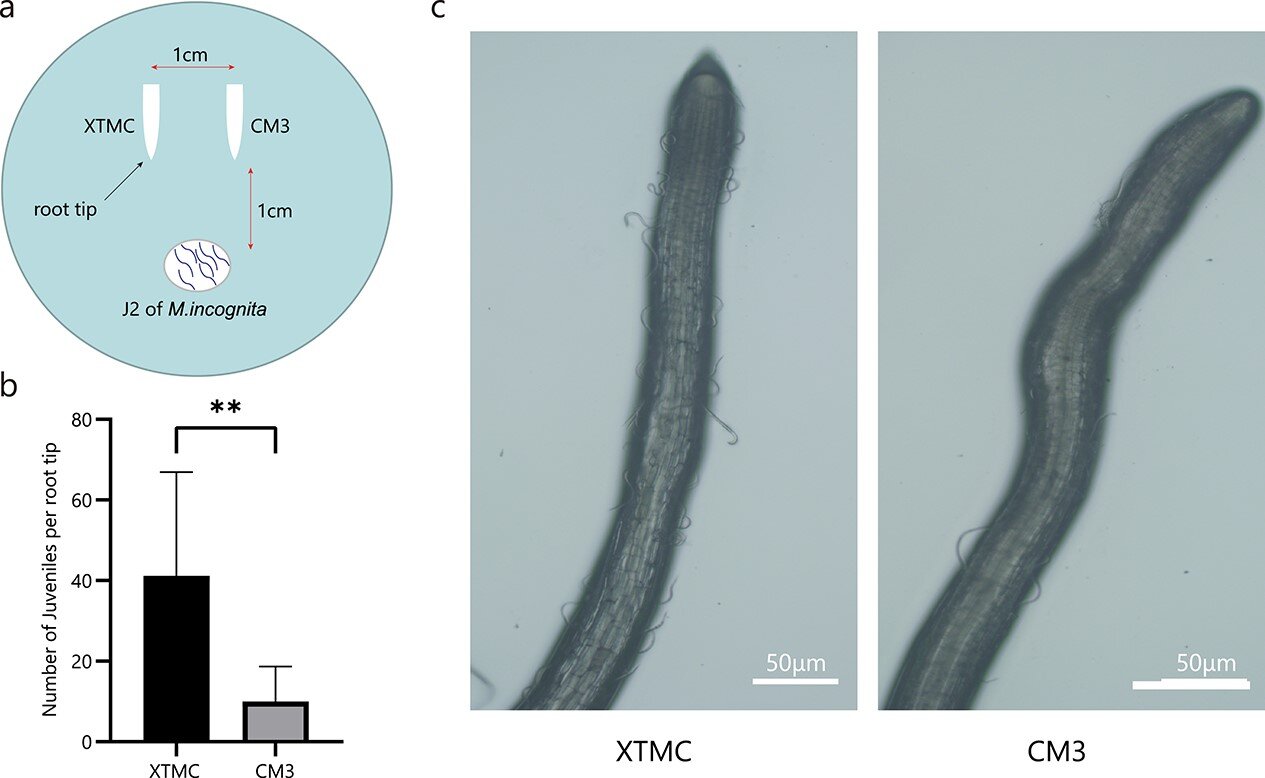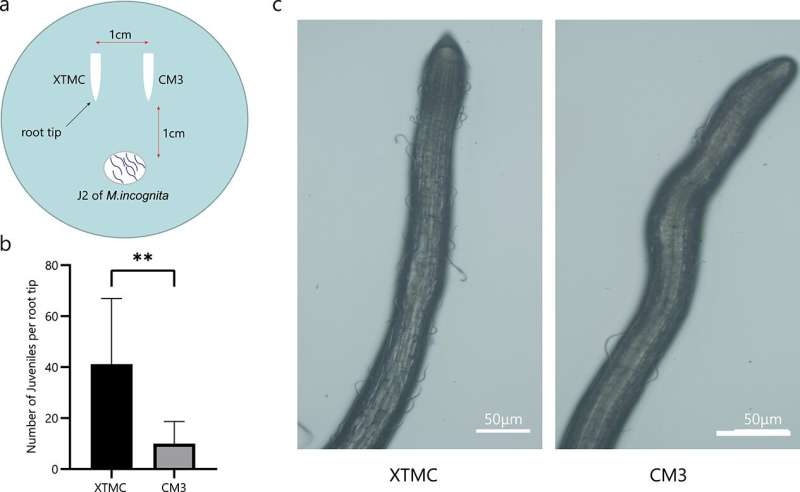

Recently, scientists from the Institute of Vegetables and Flowers of the Chinese Academy of Agricultural Science provided new insights into the correlation between cucurbit root volatiles and root-knot nematode parasitism, paving the way for development of more sustainable cucumber production.
The researchers used the resistant C. metuliferus line CM3 and the susceptible cucumber line Xintaimici (XTMC) as study materials. CM3 roots repelled second-stage (J2) larvae of Meloidogyne incognita, whereas the roots of XTMC plants attracted the larvae. CM3 and XTMC were found to contain similar amounts of root volatiles, but many specific volatiles, including nine hydrocarbons, three alcohols, two aldehydes, two ketones, one ester, and one phenol, were detected only in CM3 roots.
One of these specific volatiles, (methoxymethyl)-benzene, repelled M. incognita, whereas creosol and (Z)-2-penten-1-ol attracted it. Interestingly, creosol and (Z)-2-penten-1-ol effectively killed M. incognita at high concentrations. The researchers also found that a mixture of CM3 root volatiles increased cucumber resistance to M. incognita.
“This is the first study on volatile compounds in the roots of cucurbitaceous crops. The results provide insights into the interaction between the host and plant-parasitic nematodes in the soil, studying why C. metuliferus repels nematodes and whether there are any substances that can help cucumber avoid nematode infection or kill nematodes around roots is of great significance to cucumber production, which can be used to manage nematodes,” said the authors.
The study was published in Horticulture Research.
Tomato plants are more resistant against nematodes when colonized by a fungus
Xiaoxiao Xie et al, Negative regulation of root-knot nematode parasitic behavior by root-derived volatiles of wild relatives of Cucumis metuliferus CM3, Horticulture Research (2022). DOI: 10.1093/hr/uhac051
Provided by
Nanjing Agricultural University The Academy of Science
Citation:
Parasitic behavior of the root-knot nematode is negatively regulated by root-derived volatiles of C. metuliferus (2022, August 12)
retrieved 12 August 2022
from https://phys.org/news/2022-08-parasitic-behavior-root-knot-nematode-negatively.html
This document is subject to copyright. Apart from any fair dealing for the purpose of private study or research, no
part may be reproduced without the written permission. The content is provided for information purposes only.